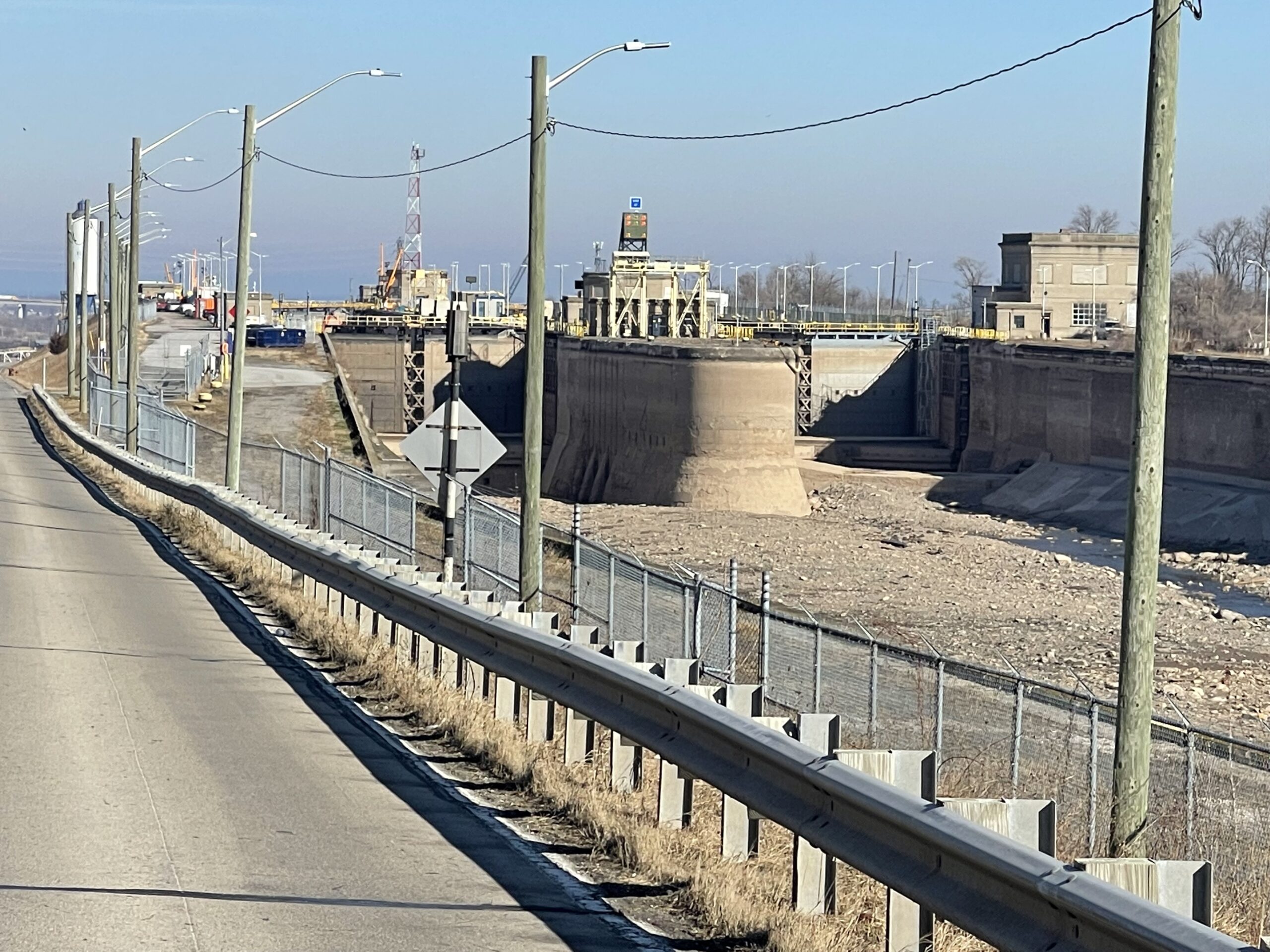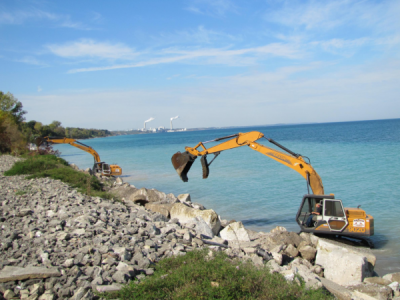
A strike by about 350 members of UNIFOR, Canada’s largest private-sector union, ended when its members ratified a new contract on Nov. 2. The agreement will give them wage increases of 5, 4 and 4 percent annually over the next three years and offer them better protections against the St. Lawrence Seaway Management Corporation’s use of outside contractors.
Members of five different union locals operating 13 of the Seaway’s 15 locks, walked off the job on Sunday Oct. 22. While union officials said early last week there was a wide gulf between the SLSMC and UNIFOR, they were ordered by the Canadian government to begin negotiations on Friday Oct. 27. Negotiations continued through the weekend, with a tentative agreement reached late Sunday.
Despite the fact striking workers had not yet voted on the deal, they returned to work Monday Oct. 30, allowing ship traffic – and hundreds of millions of dollars worth of cargo – to begin moving through the system again.
Members voted Thursday, Nov. 2, with supervisors and engineers 87-percent in favor and maintenance, operations and office personnel 85-percent in favor. The first raise is retroactive to April 1 this year and each member will receive a $2,000 signing bonus.
John Hockey, a UNIFOR spokesman, said members were concerned about wages – especially for some of the maintenance workers.
“They do repairs and all the things skilled trades workers do. Repairing bushings and pins that could weigh hundreds of tons on lock doors, and high-voltage electrical systems, you name it,” he said. “There’s a potential to lose your life on any given day depending on what you’re doing.”
Brief strike had significant impact
Officials were concerned the strike could cripple businesses and cause the loss of billions in economic activity if it continued.
Each day erased more than $70 million from the American and Canadian economies, said Jayson Hron, communications director for Port of Duluth-Superior, the U.S.’ furthest inland seaport.
“I’m thankful the Seaway has been re-opened and disappointed in the long disruption,” he said. “There’s no way to make up time on the Seaway system, unfortunately. The best we can do is continue moving forward in the most efficient way possible through what remains of the shipping season.”
Duluth’s major outbound cargo consists of grain from the Upper Midwest, which is a time-sensitive commodity exported mostly to nations in Europe and North Africa. When the strike began there was one ship loaded with wheat destined for Algeria heading toward the Canadian side of the Seaway and multiple ships already in the Great Lakes heading toward Duluth to load grain.
Pascal Chan, senior director of transportation, infrastructure and construction at the Canadian Chamber of Commerce (CCC,) said the Seaway’s closure wasn’t as bad as the Port of Vancouver strike earlier this year.
“It probably affects you a little bit less in the U.S., we just got off a port strike in British Columbia that lasted the entire month of July and had devastating consequences for the economy,” he said.
Last year, about 39 million tons of cargo valued at $12.2 billion USD passed through the Seaway, according to the CCC. Disrupted cargo includes sand, salt, potash, cement, iron, steel and machinery as well as liquids like gasoline, diesel, kerosene and alternative fuels.
Canadian Manufacturers and Exporters estimates the shutdown cost about $25 million dollars per day based on average annual economic activity associated with the Seaway.
During the eight-day shutdown about 150 ships, both lake freighters and ocean-going vessels, were affected. That includes the USS Marinette, the U.S. Navy’s newest littoral combat ship, recently commissioned in Menonimee, Michigan, which was briefly stuck in Lake Erie awaiting the Welland Canal’s re-opening.
A shipping highway to the Midwest and beyond
The Seaway is comprised of seven locks on the St. Lawrence River (between the Atlantic Ocean and Lake Ontario) and eight in the Welland Canal (between lakes Ontario and Erie,) allowing ships to rise or fall 570 feet, the distance from Lake Erie’s surface to sea level.
While the Great Lakes support more than 120 vessels operating solely in the lakes, thousands of trips per year are made by ocean-going ships passing through the Seaway.
John Jamian, director of operations for Detroit / Wayne County Port Authority, said during the strike he had eight ships awaiting transit to his port including ships arriving from Turkey loaded with cement.
“The construction industry has been aggressively building and there’s so many projects going on that demand is really high,” he said.
And while Jamian’s lake freighter customers were still moving iron ore, salt, coal and other products in and out of his port, he’s concerned about international shippers moving to other transportation modes, like trucks and railroads.
“You have to get those customers to come back once they’ve left,” said Jamian.
And even after the shutdown, he said, there’s always the possibility of other labor actions at other critical chokepoints like the Seaway.
“We’re facing one here in the Motor City with the UAW and the factories with the car companies. Their objective is to hit quick, hit hard and hopefully come out successful. I don’t take either side in this thing, our only concern is for the economy.”
UNIFOR satisfied with results, glad strike is over
Hockey said that despite multiple negotiations earlier in the year, SLSMC failed to act in good faith by not coming back to the table before the strike deadline. But, he said, UNIFOR members, after finally receiving a proposal which seemed fair, acted in the best interest of the Seaway and its customers.
“In good faith we went back to work Monday morning and did a ratification Thursday evening, instead of waiting until it was ratified to go back to work,” Hockey said.
In addition to the signing bonus and wage increases for members, a top federal mediator will be used before grievances against SLSMC enter into arbitration, he said. Those grievances include issues arising from the use of outside contractors to perform work that should be performed by UNIFOR members.
According to Hockey, UNIFOR has a win rate of 100 percent over the last three years when it comes to grievances against SLSMC in arbitration.
“All we wanted was something fair and respectable in the current climate we’re in and something that shows our members are valued for the work they do,” he said. “We’ll see how it goes with this corporation. There needs to be some changes to improve the relationship. If and when that happens I can see things running a little smoother,” he said.
SLSMC did not respond to GLN request for comment.
Catch more news at Great Lakes Now:
Strikers have shut down a vital Great Lakes shipping artery for days, and negotiations are looming
Great Lakes imports and exports halted by strike
Featured image: A Welland Canal lock in February during winter closure and maintenance. (Photo Credit: James Proffitt)




